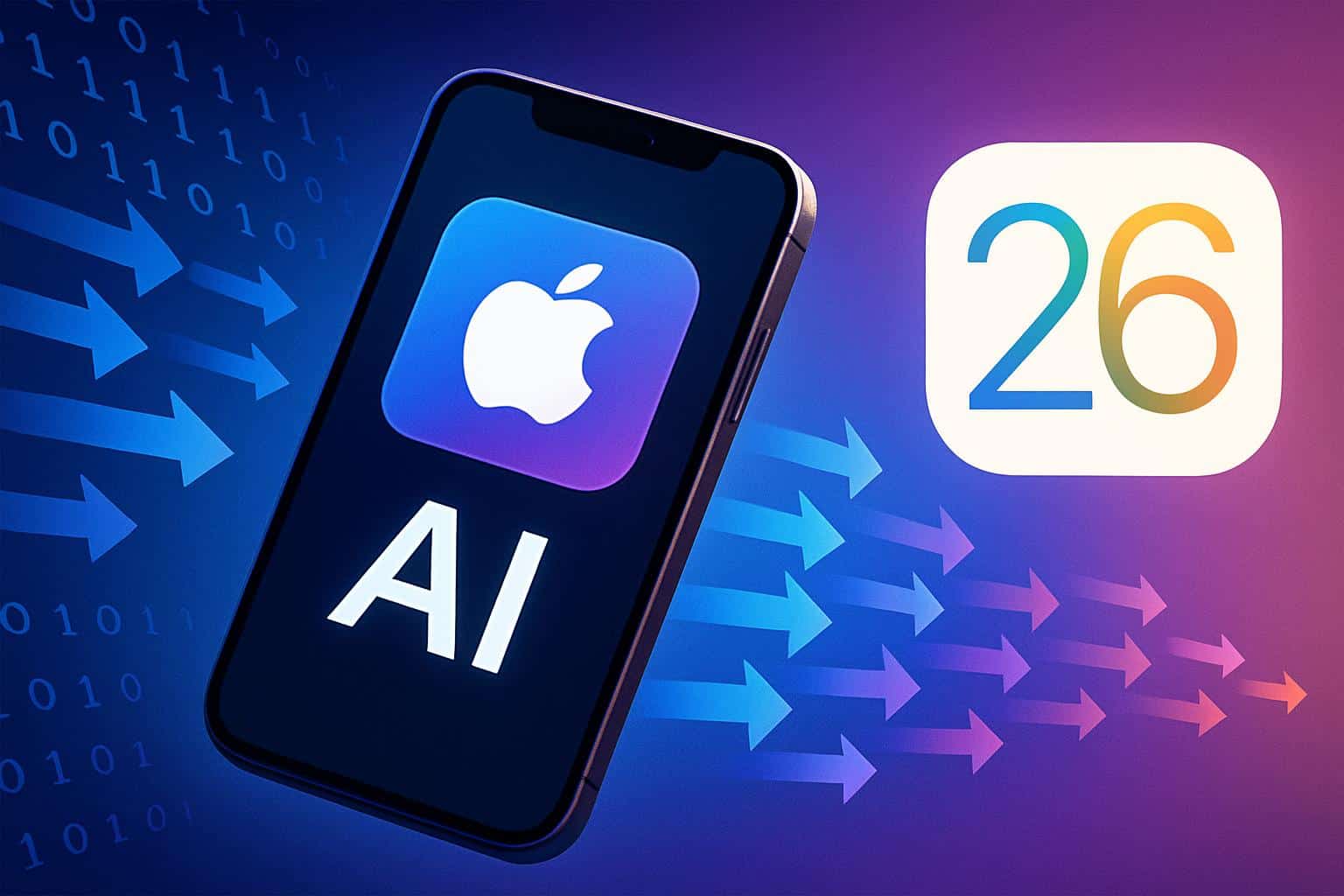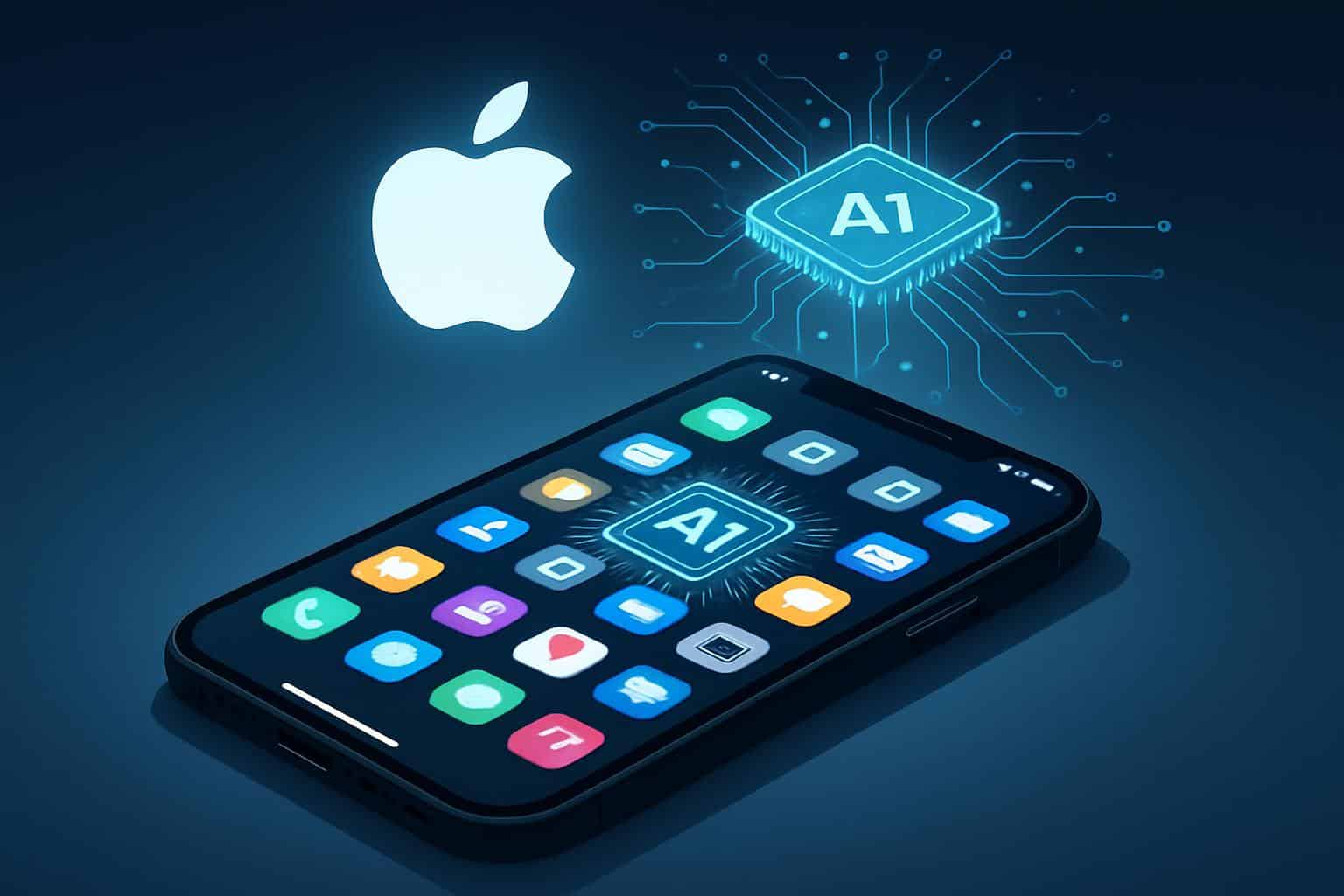Apple is applying an in-depth understanding of the way people communicate with their devices to its new messaging-based features. For iOS, developers are relying on Apple’s Foundation Models framework to create features that work natively; eliminate cloud calls but maintain low latency; and protect user data privacy. The outcome is an incremental tsunami of small enhancements — summarizers, smart tags, voice-to-structure, and context-sensitive prompts — that subtly reorder the world of what you’ve known without bolting on to it more subscription charges for inference.
What Apple’s On-Device Models Do for iOS Developers
Apple’s templates expose compact language and multimodal models that are quantized to run on the Neural Engine with guided generation and tool calling so outputs can be shaped and used directly to invoke some app behaviors. Developers mention a handful of patterns that have proved to be reliable:

- Generating constrained text (such as JSON, lists, and the like)
- Classification done for the purposes of tagging or routing
- Semantic summaries
- Speech or free text broken down into actionable tasks
Apple has pitched the approach as both privacy-preserving and, in inference, cost-free — a combination that hasn’t been lost on indie makers and enterprises.
Early App Patterns on iOS 26 Show On-Device AI Uses
It’s education and creativity apps leading the way.
Lil Artist includes an AI story builder that will create kid-friendly stories based on a character and theme, all on the device. LookUp, a vocabulary app, now creates example sentences on your device and shows word roots by processing the data locally rather than sending it to a server.
Productivity developers are deploying classification and summarization to reduce friction. Tasks tries to suggest tags, identify repeating tasks, and turn dictated thoughts into separate to-dos. Day One reads journal entries for highlights, auto-titles, and reflective prompts as you write; Capture displays category suggestions as you type. Stoic writes mood-aware prompts, summarizes entries, and helps search through a personal archive.
Finance apps are reaching for models for guidance at the margin. MoneyCoach highlights spending anomalies — for example, a week where you overspent on groceries or beat your norm — and immediately pings categories and subcategories to make future entries speedier. CardPointers allows users to ask questions about card rewards and offers in natural language, while using local inference for privacy-sensitive queries.
For the lifestyle and cooking sites, Crouton states tag relevance, determines a timer name, and reorganizes raw text into step-by-step instructions. Dark Noise takes a short description (‘gentle rain with distant thunder,’ perhaps) and builds you a corresponding soundscape, which you can fiddle about with after the computer has put it together. Lumy integrates weather-aware suggestions into its sun-tracking experience right off the bat.
Any workflow that depends on documents, including contracts, is perversely optimized further with instant summaries. Signeasy pulls out critical elements of the agreement for signees so they can understand their obligation at a glance. In products such as Notebook and Tables, Zoho has included local summarization, translation, and transcription that meet data locality efforts for the enterprise.

Sports and media apps demonstrate how lightweight summarization can transform live experiences. Lights Out, an F1 Sidekick app by developer Shihab Mehboob, cuts commentary down to race length so fans can catch the action between laps. A broke first-time investor and a Netflix-binging groom’s best man from college teach him how to live while they work their way around the rules.
Health and fitness manufacturers are embracing organized output. SmartGym translates natural-language workout descriptions into sets with reps, intervals, and equipment lists, and generates monthly progress summaries. Another training tool suggests equipment-free replacements as soon as it senses a machine you don’t have. A to-do app that offers a “listen mode” will turn your spoken stream into cleanly splayed-out tasks.
Even niche instruments benefit. Guitar Wiz:
- Chords as you learn them.
- Intervals for advanced players.
- Handles more than a dozen languages by running translation and explanation locally, all inside the app.
Developers’ Preference for Local Inference on iOS
There are four motivations that emerge again and again in developer notes and conference sessions. First, there’s trust: sensitive notes, finances, contracts all stay on the device. Second, speed: small prompts and constrained outputs in the blink of an eye without needing to go over the network. Third, cost: there’s no per-token bill when the model runs on the phone, and that matters for indie apps at scale. Fourth, reliability: features work on a plane, in a low-signal dead zone, or when the servers are spiking.
Limits of Apple’s Small Models and Practical Workarounds
Apple’s models are purposefully tiny in relation to those on the frontier from competitors such as OpenAI, Anthropic, Google, or Meta. This both keeps energy use and latency in check but limits raw depth of reasoning and wide creativity. Developers work within those constraints by using prompt templates; guided generation to ensure that the schema is enforced; and tool calling as a way to route complex tasks to app logic over the model. This contrasts with many tasks, which value precision over flourish — classification, summarization, and transformation, to name a few, wherein we often desire compact models.
What to Watch Next as On-Device AI Matures on iOS
Look for expanded use of tool calling as apps wire models to timers, calendars, and navigation — adding even more multimodal features using text, audio, and camera input. Enterprise adoption ought to expand as companies such as Automattic and Zoho legitimize privacy-first patterns. And as Apple iterates the Neural Engine and offers more models, developers will likely push beyond tags and summaries to richer assistants that feel situational rather than impersonal.
The early takeaway here is obvious: local AI on iOS 26 is less about buzzy bots that make headlines, and more about shaving a few seconds off your average day. It’s the small, reliable wins — built with guardrails and running on your phone — that are adding up to a real change in what apps feel like to use.

